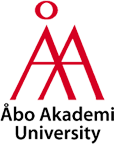During the time of our project, we have met with many of students, teachers and teacher educators. When we tell them about our project, we always start with explaining that we want teachers in Europe to be more linguistically sensitive in their teaching. Then we explain why it is important, that it’s a matter of the students’ wellbeing and achievements in school. And somewhere around here we often get the same question: Okay, but can you give me concrete examples of how I can teach linguistically sensitive?
And yes, there are many straightforward things you can do. But before that you really have to understand why you should start thinking about these things, and what things to change. A good way of doing that is to observe your surroundings, in this case, the school you do your teacher practice in or the place you teach. And when you start doing this, you have an excellent observation protocol to help you do that.
Our protocol focuses on different aspects, for example, the school environment, the students’ wellbeing and the use of different languages in the classroom. With the help of the protocol, you observe elements connected to linguistically sensitive teaching in the school environment, but you can also give examples of your own suggestions of how it could be done.
At Åbo Akademi University we got a chance to try out the protocol in November 2019 when 55 student teachers did their Field practicum in Swedish speaking schools around Finland. Back at the university, we met for closing seminars where the students got to share their experiences of, for example, the observation protocol. A total of 52 students gave their permission for us to audio-record the discussions and use them in the Listiac project.
During Spring 2020, I wrote an article (in Swedish) for my doctoral thesis based on the recordings. I focused only on the parts of the discussions where the student teachers talked about observations connected to good relations and well-being. As you might have guessed, this is the topic of my doctoral thesis. And if you ask me, the most important and interesting topic of all (but maybe all researchers say this about their topics). However, in the recordings I revealed six discourses relating to relational aspects the student teachers associated to linguistic diversity. For example, they saw that the teachers encouraged the students to use their home language in different ways and they gave the students tools for communicating with their classmates.
In addition to the observation protocol, Listiac collected data testing also other instruments. During two of these occasions, we took the opportunity to use my article and let the students read this in advance or see a video where I talk about it. One of the sessions was especially interesting as the same students who were part of my article also participated here. We were so glad to see that the students were excited about taking part of the findings. One of the students said: I think it was interesting to see the video and the results of the Listiac project that we were part of because the topic linguistically sensitive teaching in the classroom was really quite new to me, therefore it was useful to get to reflect on this theme. I had an aha-moment.
As my article is written about the practicum, the topic was relatable and the students were able to discuss the results from their point of view and experiences. They said that they got new ideas and that they learned new things by reading about what their co-students had observed. To my great joy, I saw them discuss the theory, in this case relational aspects and linguistically sensitive teaching, more in depth now with support from the article than the first time. Not only did I see how good of a tool the observation protocol is, but this experience reminded me of the importance of student motivation in order to add value to the tasks we give them.
By making the students a bigger part of our research and giving them the time to discuss these results, we can not only increase their knowledge but maybe also get them more interested in theory-based learning, that is, the value of science (OECD Future of Education and Skills 2030). What can warm a teacher educator’s heart more than this?

Written by Jenny Haagensen
Åbo Akademi University, Finland



